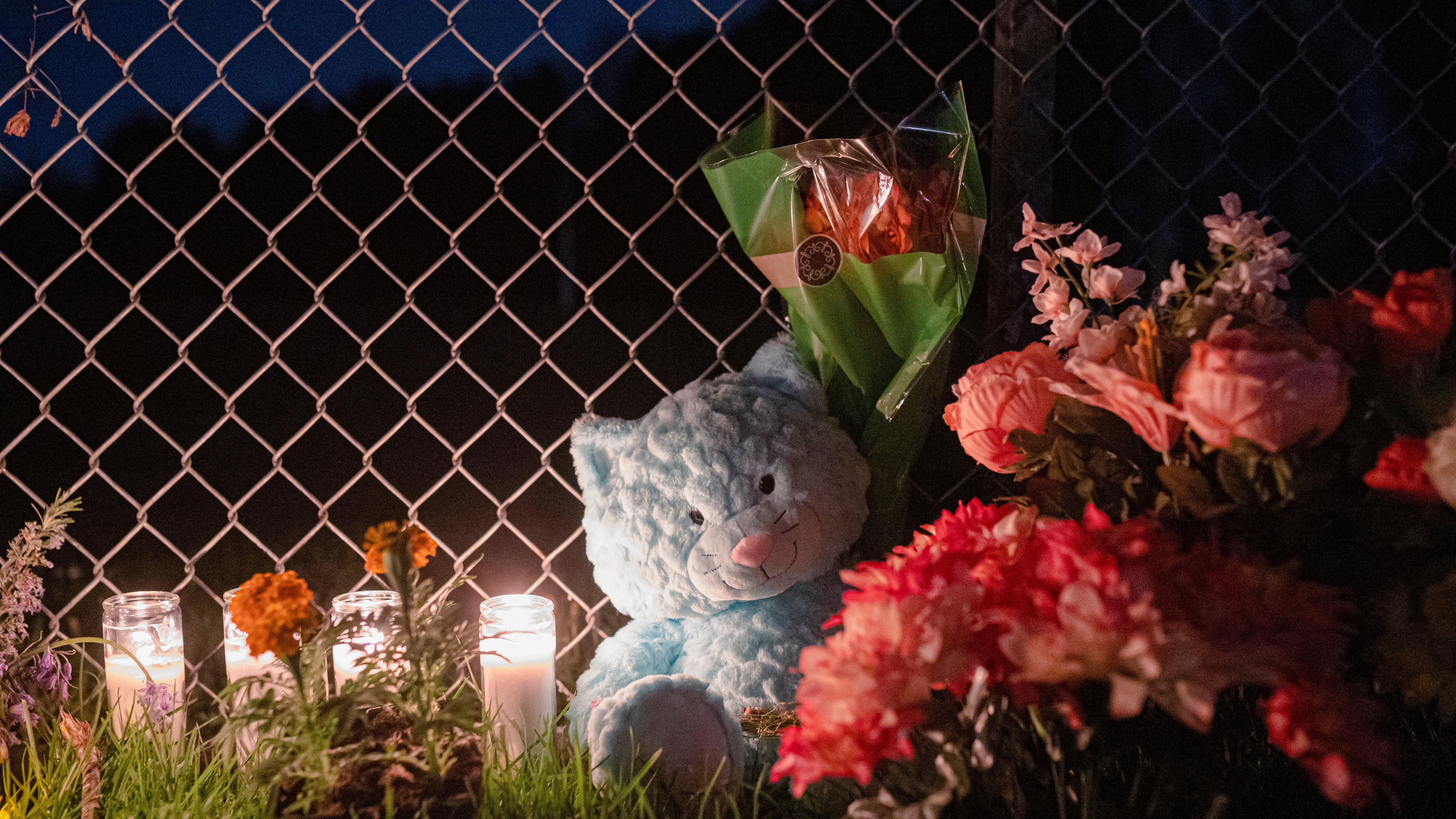Shortly before 9:30 am on April 16, Portland emergency dispatchers sent police officers to Lents Park to respond to a report of a man quick-drawing a handgun “like James Bond or like a cowboy.”
What happened in the four minutes after police arrived was the precise scenario Portland city officials had spent nearly two years trying to prevent from happening in that exact place.
A Portland police officer shot and killed an unhoused man who had a history of mental illness. And the man’s “gun,” which drew the police to the park, turned out to be a replica with a bright orange tip—a key indicator that a firearm isn’t real.
Portland police killed Robert Delgado, 46, at a particularly precarious moment in the city and beyond. The nation was anxiously awaiting a verdict in the trial of former Minneapolis police officer Derek Chauvin, who was convicted on all charges Tuesday for the May 2020 murder of George Floyd.
Now the Portland Police Bureau must reckon with a killing by one of its own. And Portlanders who’ve demanded criminal justice reform are asking why a cop was sent to Lents Park in the first place.
The Police Bureau and the the Bureau of Emergency Communications have not released a crucial piece of the puzzle: a recording of the original 911 call or calls that asked someone to respond to Delgado in the park. That tape would show what a caller told the dispatcher about Delgado’s behavior and weapon.
But here’s what we do know: When the emergency dispatcher received a call about Delgado on Friday morning, the dispatcher would have likely been aware of several response options: send the city’s new, unarmed crisis response team; send armed officers with specialized training in helping people in mental distress; or send a beat cop. (The choices aren’t mutually exclusive; dispatch can send any combination of the three. And many patrol officers are also trained in mental health crisis response through the Enhanced Crisis Intervention Team.)
BOEC dispatched beat cops. One of the armed police officers—a U.S. Army veteran and trained sniper—shot and killed Delgado from 90 feet away, police say.
The killing places a spotlight on the enormity of the decisions being made at the 911 dispatch desk. It also displays the limited alternatives the city still has to dispatching armed police officers to calls of Portlanders in mental distress—despite years of preparation, a 7-year-old settlement agreement with the U.S. Department of Justice, and a $4.8 million pilot program.
“This is a classic don’t-send-the-cops situation,” says Jason Renaud, board secretary of Portland’s Mental Health Association. “There’s someone doing a crazy dance in almost every city park in Portland at some time during the day. There are protocols with these alternatives to policing that keep [unarmed responders] safe. They’re not just rushing in and getting themselves shot.”
By 9:36 am on April 16, the first police officer arrived at the East Portland park that’s also home to the Portland Pickles baseball stadium. Police were looking for a white male wearing black pants and a red shirt, and quick-drawing a handgun.
It’s not clear exactly what the person calling 911 told police they saw in the park. PPB and BOEC have not released that call or the accompanying report, despite requests from WW.
But the transcript of police dispatch transmissions, released by the Police Bureau on April 19, gives a summary of what the cops expected to find at the park.
“I called the caller,” the responding officer says over police radio transmissions. “This guy is wearing a red shirt and black pants, like in the call. Apparently, he’s acting like James Bond or like a cowboy doing like quick-draws with it. He’s not pointing it at anybody.”
To determine if Delgado had a real firearm, the dispatcher could have asked the 911 caller more questions about the gun’s appearance, says Dan Handelman of Portland Copwatch, a decades-old police oversight group. For example: “Does it have an orange tip on it?” Handelman says. It’s not clear whether the dispatcher did that.
Lents Park falls squarely within the service boundaries of a groundbreaking program intended to reduce police interactions with people in mental distress living on the streets.
Portland spent years trying to reduce such interactions, after the U.S. Department of Justice found that officers engaged in a “pattern and practice” of excessive force against people experiencing mental health crises.
In November 2019, the city announced a solution: the creation of Portland Street Response, a mobile crisis team consisting of a paramedic and a licensed mental health professional who could offer an unarmed response—without the aid of law enforcement—to people in mental health or drug-induced crises.
After months of buildup and an 860% increase of its budget last June, the program officially launched its pilot team on Feb. 16. Its territory: the Lents neighborhood in Southeast Portland, where Lents Park is a central gathering place.
“It seems to me that the report was about a person acting strangely in a park, that maybe the Street Response should have at least been on hand, if not there first,” says Handelman.
But on Friday morning, 911 dispatchers were not able to send Portland Street Response to Lents Park. The reasons? The man reportedly had a weapon, which means PSR isn’t supposed to respond. On top of that, the two-person crisis team hadn’t started its workday.
Portland Street Response is allowed to co-respond on calls alongside Portland police, and vice versa. To date, four of PSR’s 84 calls have consisted of a co-response by the two agencies. It is unclear what the protocol for co-responding is in a situation like Delgado’s, where the weapon in question turns out to be a replica gun.
The other reason PSR wasn’t an option? In a press release Monday, the program’s leadership said the call fell outside of working hours: “The call came in at 9:30 am and PSR currently starts taking calls at 10 am.”
BOEC, which is responsible for dispatching calls to PSR, agrees. “From BOEC’s perspective, PSR is available as a resource to dispatch starting at 10 am,” said spokesman Dan Douthit. “Any calls received before then would be handled through other options.”
The city had another tool at its disposal: the Police Bureau’s Enhanced Crisis Intervention Team, a subset of the Behavioral Health Unit that was formed as part of the 2014 settlement with the U.S. DOJ.
According to bureau’s website, ECIT officers “will be the first responders dispatched by 911 to crisis calls that are determined to be related to an individual with mental illness.”
BOEC can dispatch ECIT, and PPB can also call for it. Neither agency will say whether it tried to do so.
“While I cannot speak to specific decisions made by those on a particular call, BOEC does dispatch ECIT per their procedures, in coordination with both bureau policies,” said PPB spokesman Lt. Greg Pashley. “Also, officers on a call may decide based on information available to them that they may benefit from assistance from an ECIT officer on a call.”
Instead, Officer Zachary DeLong, the former U.S. Army Ranger, responded to Lents Park.
“He’s not wearing a shirt now—just black pants,” a responding officer said over radio transmissions. “He’s on the eastern side of the park right by the parking lot. I think his hands are empty right now. We’re just gonna pull into the parking lot and address him from a distance.”
The situation escalated quickly, audio recordings show. The responding officer said Delgado suddenly became “very noncompliant” and began flipping off the police.
“I think the gun’s in his back pocket,” the officer says.
What the responding officer may not have known at the time was that Delgado feared police, according to Oregon Public Broadcasting interviews with those who knew him. Court documents from December also allege Delgado once pulled a knife on an employee of a store where he had been camping on the premises. (A menacing charge was dismissed a day after it was filed.)
Video from the April 16 shooting shows Delgado standing shirtless in the grass and tossing around the tent he’d slept in. Meanwhile, DeLong aims at him from 30 yards away.
Seconds later, police announced “shots fired” over the radio. DeLong shot and killed Delgado from nearly 90 feet away, according to PPB. Police and paramedics attempted CPR, to no avail.
Delgado died in the grass on the sunny Friday morning. A medical examiner determined the cause was a single gunshot wound.

